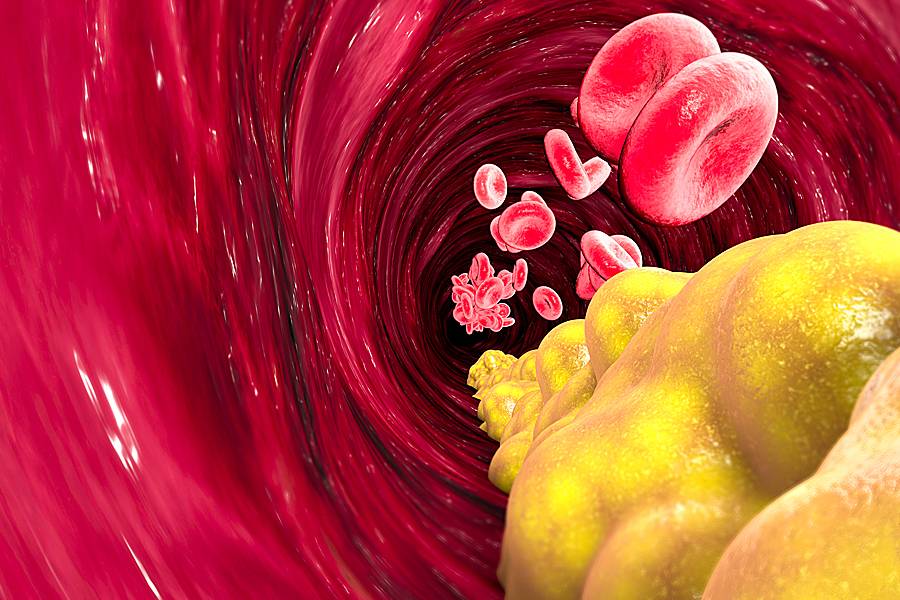This content is provided to Johns Hopkins employees through a partnership with EHP.
September is National Cholesterol Education Month and a good time to learn how you can take the lead in managing your own health. Diet, exercise, weight management, quitting smoking, stress management, and taking your medicines correctly will not only help you control your cholesterol, they also can lower your risk for cardiovascular disease.
1. Eat healthy
Your health care provider will give you information on diet changes you might need to make and might recommend that you see a registered dietitian for help with aspects such as:
- Cutting back on the amount of fat and cholesterol in your meals
- Reducing salt (sodium) intake, which is especially important if you also have high blood pressure
- Adding more fresh vegetables and fruits
- Opting for lean proteins such as fish, poultry, beans, and peas
- Cutting back on red meat and processed meats
- Switching to low-fat dairy products
- Using vegetable and nut oils in limited amounts
- Limiting sweets and processed foods such as chips, cookies, and baked goods
- Reducing sugar-sweetened beverages
- Adjusting how often you eat out
- Limiting alcohol
2. Get exercise
Regular exercise can help in many ways. It can:
- Raise your good cholesterol
- Help lower your bad cholesterol
- Let blood flow better through your body
- Give more oxygen to your muscles and tissues
- Help you manage your weight
- Help your heart pump better
- Lower your blood pressure
If you haven't been active, your health care provider may recommend moderate to vigorous physical activity for at least 40 minutes three to four days each week. A few examples are:
- Walking at a brisk pace (about 3 to 4 mph)
- Jogging or running
- Swimming or water aerobics
- Hiking
- Dancing
- Martial arts
- Tennis
- Riding a bicycle or stationary bike
- Dancing
3. Manage your weight
If you are overweight or obese, your health care provider will work with you to help you lose weight and lower your body mass index. Making diet changes and getting more physical activity can help. Changing your diet will help you lose weight more easily than adding exercise.
4. Quit smoking
Smoking and other tobacco use can raise cholesterol and make it harder to control. Quitting is tough, but think about some of the reasons below. Do any of them make you think twice about your smoking habit? Stop smoking because it:
- Keeps your cholesterol high, even if you make all the other changes you're supposed to
- Damages your body, especially your heart, lungs, skin, and blood vessels
- Makes you more likely to have a heart attack, stroke, or cancer
- Stains your teeth
- Makes your skin, clothes, and breath smell bad
- Costs a lot of money
Ask your health care provider for medicines or nicotine replacement products to help you quit. Learn more about resources available through your insurance carrier along with free state and nationwide programs on the university's Smoking and Tobacco Cessation webpage.
5. Control stress
Learn ways to deal with stress in your personal and work lives because lowering it can greatly reduce your risk of getting cardiovascular disease.
6. Make the most of medicines
Healthy eating and exercise are a good start to keeping your cholesterol down, but you may need some extra help. If your doctor prescribes medicine, be sure to take it as directed. To keep in mind:
- Tell your health care provider about all other medicines you take, including vitamins and herbs.
If you have any questions about your medicines, ask.
Tell your health care provider if, after starting a medicine, you have side effects such as muscle aches, weakness, blurred vision, rust-colored urine, yellowing of eyes or skin, abdominal pain, or headache.
- Don't skip a dose or stop taking your medicine unless your health care provider has told you it's OK.
Are you in a risk group?
In addition to eating a healthy diet and getting regular exercise, some people may need to take statins to control their cholesterol. The dose or intensity of the medicine depends on your risk factors. The risk calculator tool looks at:
- Ages between 40 and 79
- Gender
- Race
- Blood pressure (systolic and diastolic measurements)
- Total cholesterol, good cholesterol (HDL), and bad cholesterol (LDL) levels
- History of diabetes
- Current or past smoking history
- Treatment for high blood pressure
- Treatment of cholesterol with a statin
- Current use of aspirin
If you are uncertain about your risk factors, your provider may want a scan to determine a coronary artery calcium score and then decide on whether starting a medicine for cholesterol is the best treatment option for you.
Talk with your provider about your treatment goals, based on your own health history and your family history of heart disease or high cholesterol.
Make a plan to have regular cholesterol checks.
Posted in Health+Well-Being
Tagged hr newswire








